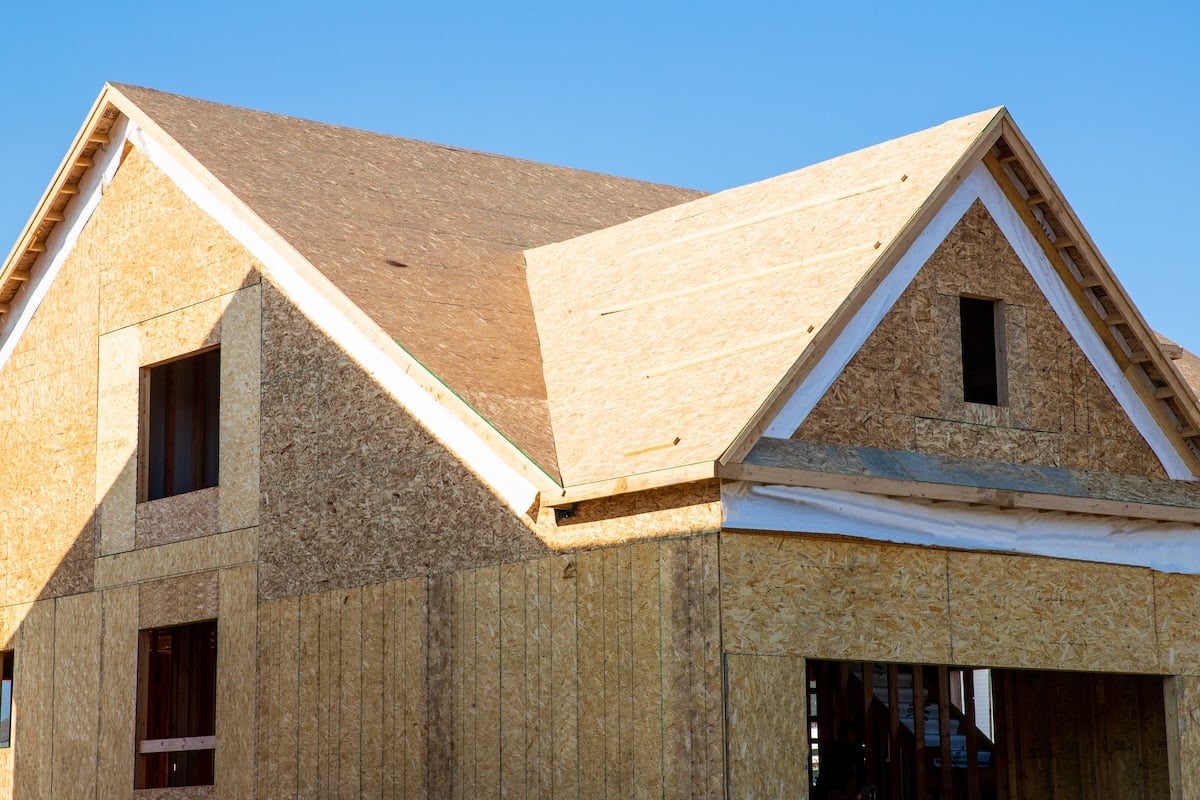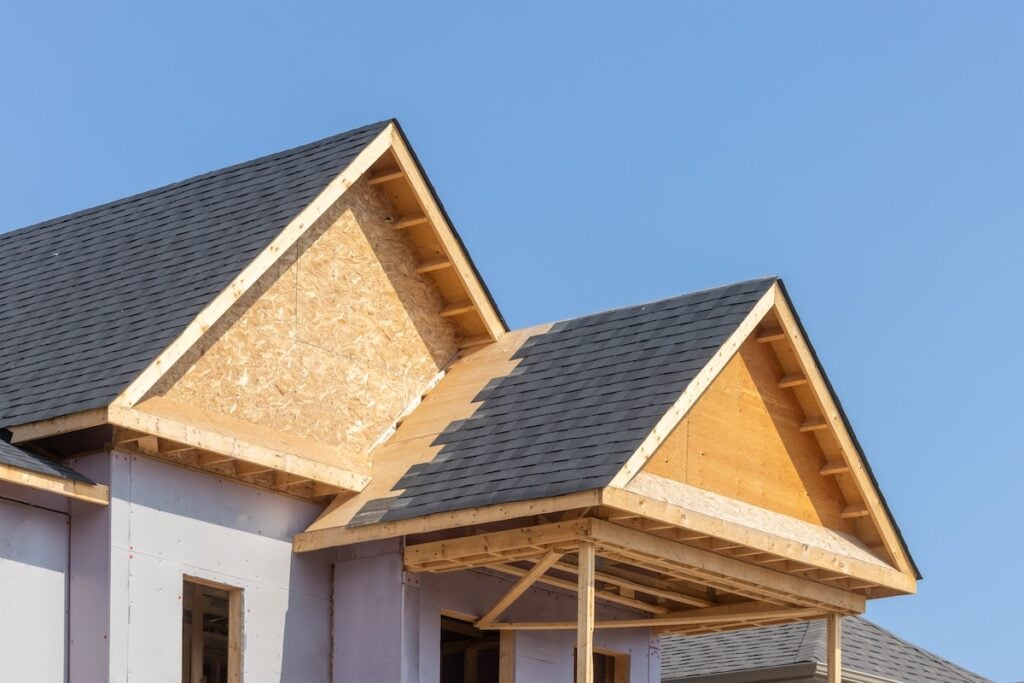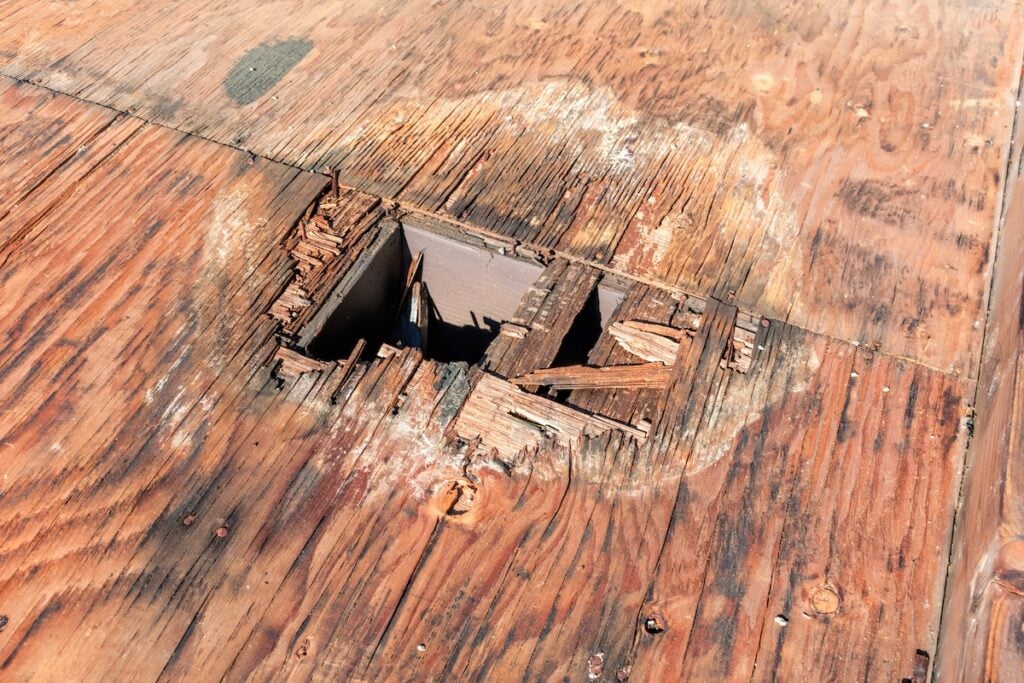
5 Roof Sheathing Types, Benefits & Installation Guide
9/05/25
5 Min Read
Roof sheathing is one of the most important yet often overlooked parts of a roofing system. Acting as the base layer that connects the roof framing to the shingles or other roofing material, sheathing provides strength, stability, and protection for your home. Without proper roof sheathing, even the best shingles or underlayment won’t perform as they should.
- Structural support: Sheathing gives your roof the rigidity needed to hold up under weight and weather.
- Moisture barrier: It helps prevent leaks and water infiltration.
- Installation foundation: Shingles and underlayment are installed directly over sheathing for secure attachment.
Let’s take a closer look at the types of roof sheathing, their benefits, and what homeowners should expect during installation.
🪵 What Is Roof Sheathing?
Roof sheathing, also called decking, is a layer of wood or wood-like material that covers the rafters or trusses of your roof. It creates a flat, solid surface for roofing materials to attach to. Sheathing also ties the structural components together, distributing weight evenly and helping your roof withstand wind, rain, and snow.
There are two primary categories of roof sheathing: sheet sheathing (large panels like plywood or OSB) and board sheathing (individual planks of wood). The right choice depends on the age of your home, roofing system, and budget.

⭐️ 5 Common Types of Roof Sheathing
Each sheathing type comes with unique benefits and considerations. Here are the most common options used in roofing today.
- Plywood Sheathing: Plywood is a strong and reliable choice made by layering thin sheets of wood veneer. It is resistant to warping, holds nails securely, and provides excellent durability. Because of its stability in changing temperatures and moisture conditions, plywood remains one of the most popular sheathing choices.
- OSB (Oriented Strand Board): OSB is manufactured from wood strands bonded with adhesives. It has become the most widely used sheathing material because it is affordable and performs well under normal roofing conditions. However, OSB can swell when exposed to moisture, so proper installation and ventilation are essential.
- Plank Sheathing: Found mostly in older homes, plank sheathing uses individual boards spaced closely together. It provides strong support but is more labor-intensive to install. Many homeowners replace plank sheathing with plywood or OSB during roof replacement.
- Zip System Sheathing: A newer option, the Zip System combines structural sheathing with a built-in weather barrier. It creates a water-resistant and air-tight seal, which reduces the need for traditional underlayment. While more expensive, it offers excellent long-term performance.
- Tongue-and-Groove Sheathing: This sheathing interlocks at the edges for added strength and stability. It is typically used for homes with exposed roof decking, like vaulted ceilings, where aesthetics matter as much as durability.
✅ Benefits of Proper Roof Sheathing
The right sheathing doesn’t just provide a surface for shingles—it plays a critical role in your roof’s overall performance.
- Durability: Quality sheathing helps your roof withstand heavy snow, strong winds, and daily wear.
- Energy efficiency: Sheathing with proper insulation and ventilation reduces heat transfer, lowering energy bills.
- Longevity of roofing materials: A stable base prevents shingles from shifting or warping, extending their lifespan.
- Moisture resistance: When installed correctly, sheathing helps block water infiltration, protecting your attic and home interior.
- Property value: Updated sheathing improves your roof’s performance and enhances resale value.
📋 The Roof Sheathing Installation Process
Replacing or installing roof sheathing follows a step-by-step process designed to ensure structural integrity and weather protection.

- Step 1: Inspection and Removal: Before installation, the old roofing material is removed, and contractors inspect the existing sheathing. Any damaged, rotted, or warped boards are taken out. This step is critical because compromised sheathing weakens the entire roofing system.
- Step 2: Measuring and Cutting: Sheets of plywood or OSB are measured and cut to fit the roof layout. Precision ensures each piece aligns with the rafters or trusses for maximum stability.
- Step 3: Installation: The sheathing is laid across the roof structure and secured with nails or screws. Proper spacing between sheets allows for natural expansion and contraction due to temperature changes.
- Step 4: Underlayment Application: Once sheathing is in place, a protective underlayment is installed on top. This provides an additional barrier against moisture before shingles or other roofing materials are added.
- Step 5: Final Roofing Installation: Shingles, metal, or other roofing materials are then installed on top of the sheathing and underlayment, completing the roofing system.
⚠️ Signs Your Roof Sheathing Needs Replacement
Sheathing isn’t visible from the outside, but there are warning signs homeowners can look for:

- Sagging roofline: Indicates weakened or rotted decking.
- Leaks in attic: Moisture penetrating sheathing may drip into your attic space.
- Mold or mildew: Damp sheathing creates a breeding ground for mold.
- Soft spots: Walking on the roof and noticing spongy areas often points to damaged sheathing.
- Frequent shingle issues: Curling or loose shingles may signal underlying sheathing problems.
💵 Costs of Roof Sheathing
The cost of roof sheathing depends on material choice, roof size, and labor. On average, replacing sheathing adds several hundred to a few thousand dollars to a roof replacement project. Plywood and OSB are the most cost-effective, while advanced products like the Zip System cost more but provide superior performance.
Homeowners should view sheathing replacement as an investment. Skimping on this step may save money upfront but can lead to leaks, structural issues, and higher repair costs later.
💪 A Strong Roof Starts With Strong Sheathing
Roof sheathing may not be the most visible part of your roofing system, but it is one of the most important. The type of sheathing you choose affects durability, energy efficiency, and long-term protection. Whether you go with plywood, OSB, or an advanced system like Zip, ensuring proper installation is key.
At Buckeye State Roofing, we specialize in complete roof replacements that include careful evaluation and installation of roof sheathing. Our experienced team makes sure your roof has the solid foundation it needs to protect your home for decades. If you’re planning a roof replacement or suspect your sheathing may be compromised, contact us today for a free estimate and expert guidance.
